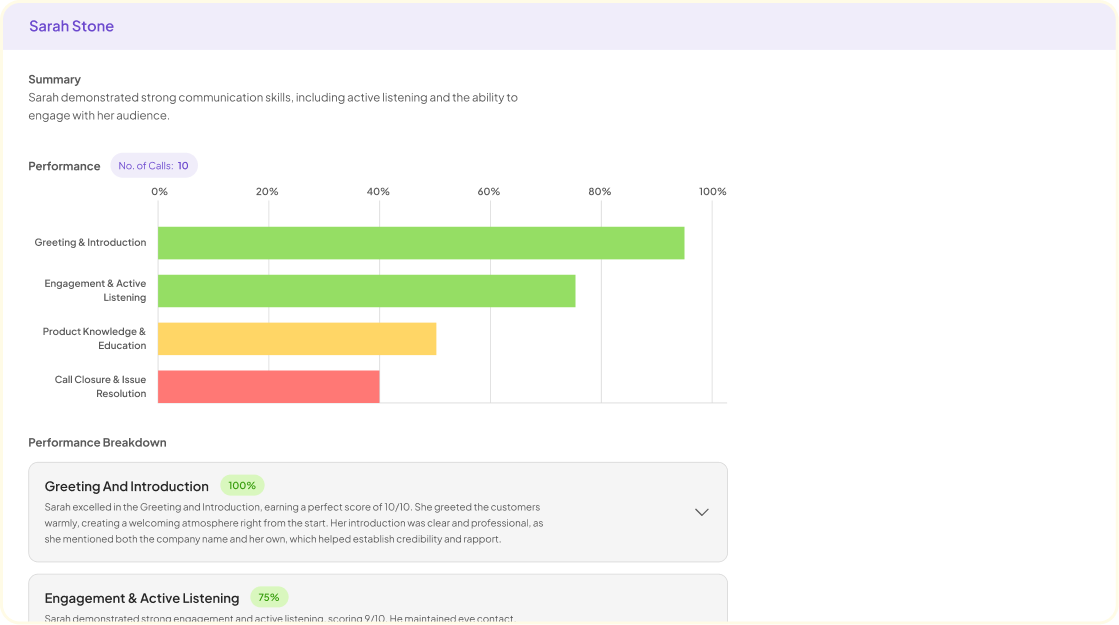Service Design Strategy forms the backbone of effective organizational transformation. As businesses strive to enhance their customer experiences, integrating design principles into service delivery becomes essential. This approach not only aligns services with user needs but also promotes innovation and fosters loyalty.
Understanding how to implement a Service Design Strategy is crucial for any organization aiming for success. It involves thorough research, empathy towards user experiences, and collaboration across teams. By focusing on these elements, businesses can create services that resonate with customers, leading to improved satisfaction and long-term engagement.
Understanding the Importance of Service Design Strategy
A well-defined Service Design Strategy is crucial for organizations aiming to enhance customer experience. This strategy shapes how services are delivered and consumed, ultimately influencing customer satisfaction and loyalty. In today’s competitive market, a focused approach to service design can differentiate a company and drive growth. Understanding the nuances of customer needs allows businesses to align their services effectively, ensuring that every touchpoint resonates with the target audience.
Furthermore, a solid Service Design Strategy streamlines operations and minimizes inefficiencies. It enables teams to identify and eliminate pain points in the customer journey. By prioritizing user-centric design, organizations can foster innovation and adapt to changing market dynamics. This strategic approach not only improves service quality but also positions companies to respond proactively to customer feedback and industry trends, ultimately leading to long-term success.
The Role of Service Design in Modern Businesses
Service Design Strategy plays a critical role in modern businesses by enhancing customer experiences through thoughtful service interactions. Organizations must prioritize this approach to build strong relationships with their clients. By focusing on understanding customer needs, businesses can identify pain points and opportunities for improvement.
Effective service design involves several key elements. First, engaging customers in the design process ensures that their perspectives shape the services offered. Second, mapping out the customer journey helps identify critical touchpoints that require attention. Third, fostering collaboration among team members enhances the innovation process, creating a cohesive approach to service delivery. Lastly, constant feedback loops allow organizations to adapt and refine their services over time. By creatively addressing these aspects, businesses can improve performance and create lasting value in a competitive marketplace.
Key Benefits of Implementing a Strategic Approach
A strategic approach to service design provides numerous benefits that significantly impact organizational success. Implementing a well-defined Service Design Strategy enhances customer satisfaction by aligning services with user needs. This alignment leads to improved user experiences, which can increase customer loyalty and retention. Additionally, a strategic focus allows for better resource allocation, optimizing operational efficiency and reducing unnecessary expenses.
Furthermore, having a clear strategy enables organizations to remain adaptable in a rapidly changing market. By continuously revisiting and refining their service design approach, businesses can quickly respond to evolving consumer preferences and technological advancements. This proactive stance not only fosters innovation but also ensures that services remain competitive. Overall, the key benefits of a strategic approach create a foundation for sustained growth and success in service design initiatives.
Key Components of a Service Design Strategy
A successful Service Design Strategy revolves around several key components that ensure customer satisfaction and operational efficiency. Understanding the user experience is essential, as it informs decisions made throughout the design process. Start by gathering insights through qualitative and quantitative research methods. This helps identify pain points and user needs that shape the overall service delivery.
Next, define the service blueprint, which outlines the frontstage interactions and backstage processes crucial to service delivery. This visual representation allows teams to see the entire service journey, from initiation to completion. Additionally, ensuring seamless touchpoints across various platforms strengthens the user experience, fostering engagement and loyalty. Finally, incorporating feedback loops enables continuous improvement, keeping the service aligned with evolving customer expectations. These foundational elements create a robust framework for an effective Service Design Strategy.
User-Centric Design Principles
User-Centric Design Principles focus on understanding the unique needs and behaviors of users to shape effective service design strategies. This approach encourages designers to view the service from the user's perspective, ensuring that features and functionalities align with real-world applications. By prioritizing user experience, we can create services that are not only intuitive but also fulfilling and engaging.
Key principles to consider include empathy, usability, and iterative testing. Empathy requires understanding user emotions and motivations, fostering deeper connections through tailored experiences. Usability ensures that services are easy to navigate, minimizing frustration during interactions. Iterative testing allows for continuous refinement based on user feedback, leading to enhancements that resonate with the target audience. These principles serve as the foundation for a service design strategy that prioritizes the user, ultimately driving satisfaction and loyalty.
Building a Comprehensive Service Blueprint
A comprehensive service blueprint serves as a visual guide that outlines every step involved in the service delivery process. To build this blueprint, it’s essential to gather insights from various stakeholders to understand their different perspectives and expectations. This careful mapping of customer interactions, touchpoints, and backend processes creates clarity on how services are experienced and perceived.
To create a robust service blueprint, consider the following key aspects:
Customer Actions: Identify and outline every action the customer takes throughout their journey. This includes every point of contact with your service.
Frontstage Interactions: Document visible interactions that service employees have with customers. These moments play a crucial role in shaping customer perceptions.
Backstage Processes: Map the behind-the-scenes activities that support frontstage interactions. These are often critical to smooth service delivery.
Support Processes: Identify systems and technologies that support frontline staff in delivering service.
Physical Evidence: Highlight all tangible elements that customers encounter, such as brochures, websites, or physical locations.
By focusing on these elements, a strategic service design can emerge, ensuring that all aspects of the service align with customer needs and business goals. This attention to detail enhances the overall service experience for both customers and employees.
Developing a Successful Service Design Strategy
A successful service design strategy begins by understanding the customer's journey and identifying their needs. To create valuable services, businesses must first conduct thorough market research and engage with user feedback. By analyzing this data, teams can map pain points and areas for improvement that are critical for an effective service design.
Next, the strategy formulation involves cross-departmental collaboration to ensure diverse perspectives are incorporated. Integrating insights from various stakeholders fosters innovative solutions that resonate with the target audience. Prioritizing user experience while maintaining operational efficiency will lead to well-rounded services. By continuously iterating on the design based on user insights and feedback, organizations can refine their service offerings and create meaningful experiences. Emphasizing a customer-centric approach is essential for success, ultimately driving loyalty and long-term growth.
Conducting Research and Gathering Insights
Conducting effective research and gathering insights is essential for shaping a successful service design strategy. Begin by engaging directly with your users, utilizing interviews and surveys to uncover their needs and expectations. Analyzing qualitative data allows you to identify prevailing themes, pain points, and desires that can inform your design process. Stay open to the evidence provided by users, as their experiences will guide you in creating a service that truly resonates with them.
Next, synthesize your findings into actionable insights. Organize the data to highlight key trends and patterns, making it easier for your team to understand and implement changes. Regular updates and discussions around these insights ensure continuous alignment between your service and customer expectations. Remember, the ultimate goal of this research is not only to solve existing issues but also to anticipate future needs, enabling a proactive approach to service design.
Prototyping and Iteration in Service Design
In the realm of service design, prototyping and iteration are crucial for refining ideas and enhancing user experiences. The prototyping phase involves creating tangible representations of concepts, allowing designers to visualize and test their ideas. This process fosters collaboration and invites feedback from stakeholders and users, ultimately shaping a more effective service design strategy.
Iteration builds on the insights gathered from prototypes. By analyzing user reactions and behaviors, designers can make informed adjustments to their concepts. This cyclical process not only leads to improved solutions but also ensures that the final service resonates with its audience. Adopting a mindset that embraces trial and error is key to developing a robust service design strategy. Therefore, continuously iterating based on user feedback is essential for success in service design, ultimately resulting in services that are not only functional but also delightful to users.
Conclusion: Mastering Service Design Strategy for Business Success
A well-executed service design strategy is crucial for achieving business success. It enables organizations to create meaningful experiences that meet customer needs, fostering loyalty and satisfaction. By understanding the intricacies of service delivery, businesses can tailor their approaches to effectively respond to market demands.
In mastering a service design strategy, continuous evaluation and adaptation play key roles. It is essential to gather feedback and measure the impact of strategies over time. This ensures that the service remains relevant and efficient. Embracing this mindset sets the stage for sustainable growth and innovation in any competitive market.


